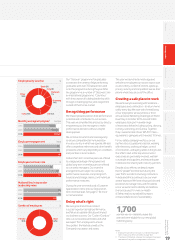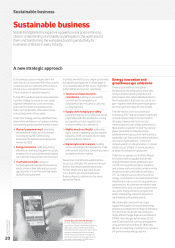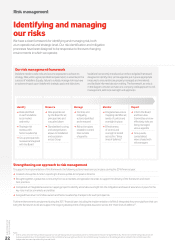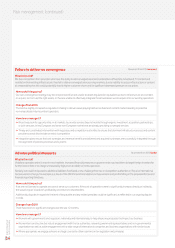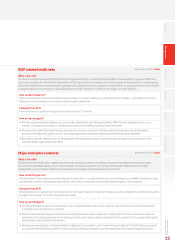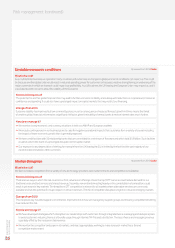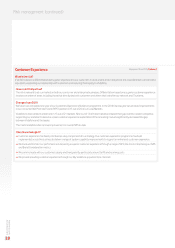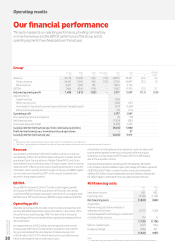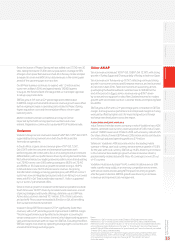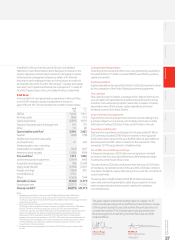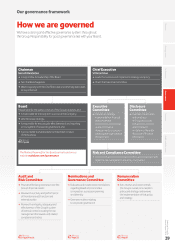Vodafone 2016 Annual Report Download - page 31
Download and view the complete annual report
Please find page 31 of the 2016 Vodafone annual report below. You can navigate through the pages in the report by either clicking on the pages listed below, or by using the keyword search tool below to find specific information within the annual report.
Long-Term Viability Statement
In accordance with the revised UK Corporate Governance Code, the Directors have assessed the prospects of the Group over
a period signicantly longer than 12 months from the approval of the nancial statements. The Board has concluded that the most
relevant time period for this assessment should be three years to align with the Group’s normal business forecasting cycle and
to reect the pace of ongoing change in the telecoms industry.
The plans and projections prepared as part of this forecasting cycle include the Group’s cash ows, committed and required
funding and other key nancial ratios. They were drawn up on the basis that debt renance will be available in all plausible market
conditions and that there will be no material changes to the business structure over the review period. As of 31 March 2016,
the Group had sources of liquidity (primarily comprised of certain cash and cash equivalent balances) and available facilities,
of £17.7 billion, which includes undrawn Revolving Credit Facilities expiring in 2020.
The Risk Management Framework on page 22 outlines the approach the Board has taken to identifying and managing risk.
In making this statement, the Board carried out an assessment of the principal risks facing the Group, detailed on pages 23 to 28,
including those that would threaten its business model, future performance, solvency or liquidity.
Against this background, the output of the long-range plan has been used to perform central debt prole and cash headroom
analysis, including a review of sensitivity to “business as usual” risks to revenue and prot growth. In addition, severe but plausible
scenarios in the event of each of the principal risks materialising individually and where multiple risks occur in parallel, were also
tested. This combined scenario included the impact of a global economic downturn, with a major impact on consumer and
enterprise sentiment causing material impact on nancial performance, and a signicant reduction in the Group’s renancing
capability. This was considered together with a cyber-attack resulting in a major customer data breach in multiple markets leading
to a broader reputational risk.
To assess viability, the headroom position under these scenarios has been calculated using the cash and facilities available to the
Group. The assessment took into account the availability and likely effectiveness of the mitigating actions that could be taken
to reduce the impact of the identied underlying risks. The headroom remained positive in all scenarios tested.
Having considered the principal risks that the Group may face, the Directors consider that this stress-testing based assessment
of the Group’s prospects is reasonable in the circumstances, taking into account the inherent uncertainty involved. Although this
review has considered severe but plausible scenarios relevant to the Group, any such review cannot consider all risks which may
occur, therefore an overall view of the total level of risk required to impede our viability was also considered. The cash and available
facilities at year end, along with the mitigating actions available to reduce cash outgoings, provides a sufcient level of headroom.
Based on the results of their analysis, the Directors conrm that they have a reasonable expectation that the Group will be able
to continue in operation and meet its liabilities as they fall due over the three-year period ending 31 March 2019.
Overview Strategy review Performance Governance Financials Additional information
Vodafone Group Plc
Annual Report 2016
29


